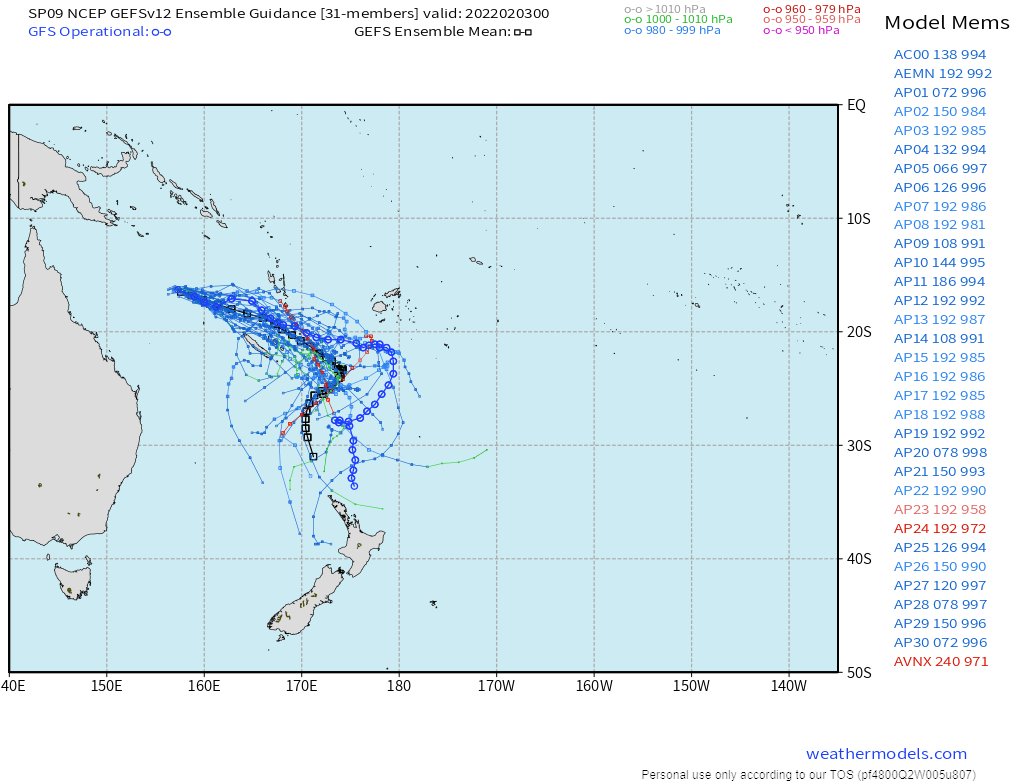
Very Intense Cyclone Batsirai #ExtremeWeather Update 4. 3/2/21
#Batsirai has slowed down to a crawl, it has been moving WSW at 5mph (7kmh) for the past 17 hours at least. It is also wobbling and weakening. But the current official forecasts do not reflect this WRT to landfall.

#Batsirai has slowed down to a crawl, it has been moving WSW at 5mph (7kmh) for the past 17 hours at least. It is also wobbling and weakening. But the current official forecasts do not reflect this WRT to landfall.


This is common for an EWRC [Eye Wall Replacement Cycle], after which the storm can be expected to strengthen rapidly. #Batsirai's eye is certainly now very ragged. (images here used to verify speed and heading data). It appears the track is to the north of the current forecast. 





The much larger eye indicated in the latest imagery is still full of cloud, and it appears the EWRC is complete. 



Spaghetti model data shows no change to the track heading or timing, but bear in mind that the more larger/intense a cyclone is the less predictable it becomes.
Typhoon #INFA and Hurricane #Dorian are very good examples of this.


Typhoon #INFA and Hurricane #Dorian are very good examples of this.



This closeup animation - 24 hours - shows the eyewall replacement cycle in close up - which is not yet complete as the new eyewall structure is far from complete. Comparing this with the track the only real variation is slightly slower forward motion than expected.
24hour Satellite Loop image of #Batsirai to 10.15am UTC today. 3rd February. Outer bands of the storm have now reached Madagascar's East Coast, current forecasts suggest landfall of the eyewall will take place at around 6am on Saturday 5th February.
This simulation animation from the GFS model shows six hourly rainfall from 6am tomorrow (4/2/21) morning to 6am Monday (7/2/21).
This animation shows latest GFS model run's forecast 10m sustained winds. It shows around 90 knots (105mph 166kmh) at landfall.
There is some good news for Mozambique & South Africa in the latest few GFS runs. These four plots showing accumulated rain as of 6am 10 Feb.
1. 1/2 6z
2. 2/2 6z
3. 2/2 18z
4. 3/2 6z
A clear trend in the GFS model has #Batsirai turning south after crossing Madagascar.



1. 1/2 6z
2. 2/2 6z
3. 2/2 18z
4. 3/2 6z
A clear trend in the GFS model has #Batsirai turning south after crossing Madagascar.




And the latest run from the European ECMWF model is in agreement on this.
All that being said, everything is dependent on what happens over the next 48 hours following this eye wall replacement cycle.
All that being said, everything is dependent on what happens over the next 48 hours following this eye wall replacement cycle.
Specifically if #Batsirai:
- reorganises itself quickly and strengthens.
or
- continues to move very slowly, possibly weakening but generating more and more atmospheric water.
Then other scenarios become possible.
- reorganises itself quickly and strengthens.
or
- continues to move very slowly, possibly weakening but generating more and more atmospheric water.
Then other scenarios become possible.
/ENDS
@Threadreaderapp unroll
@Threadreaderapp unroll
• • •
Missing some Tweet in this thread? You can try to
force a refresh














